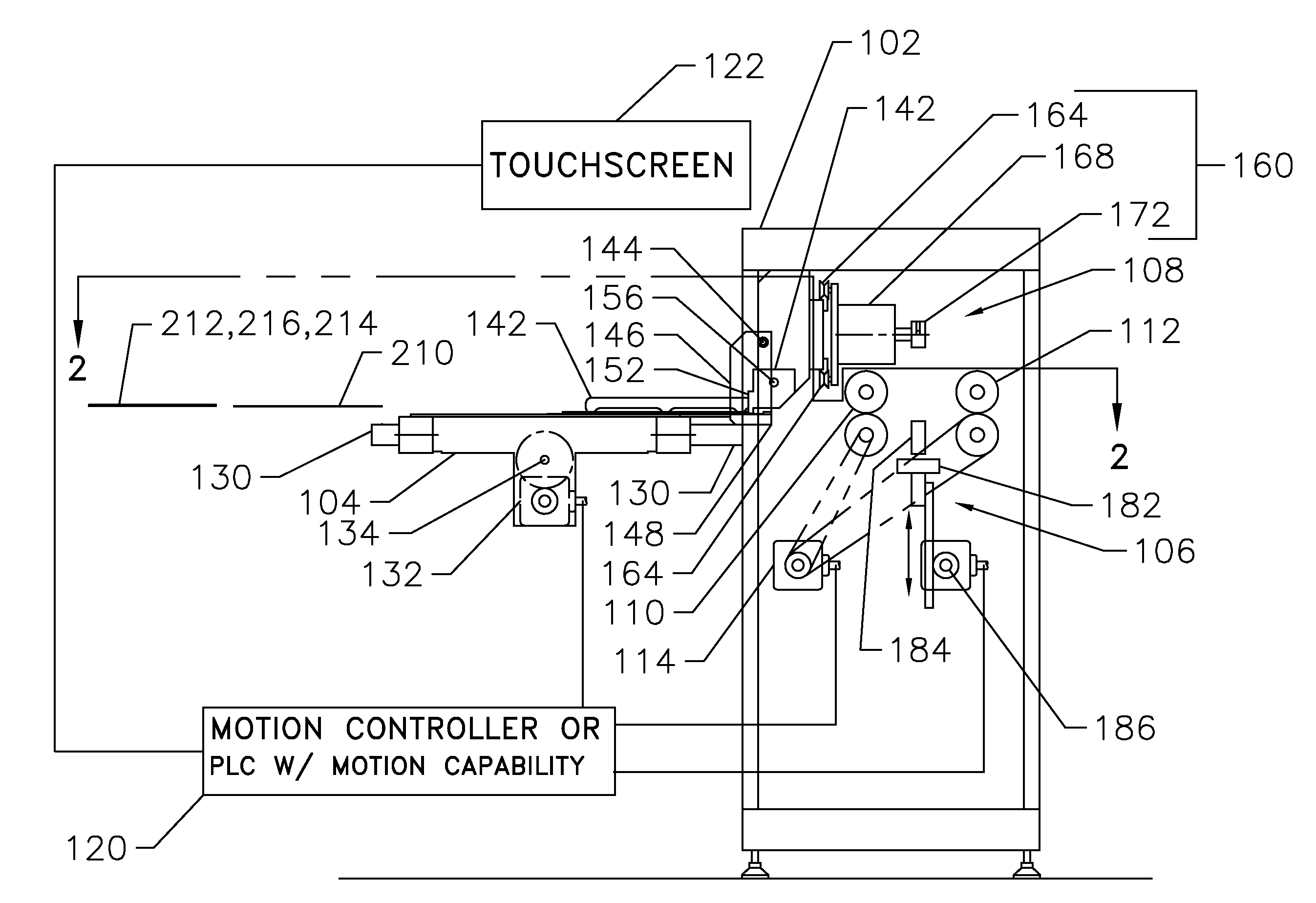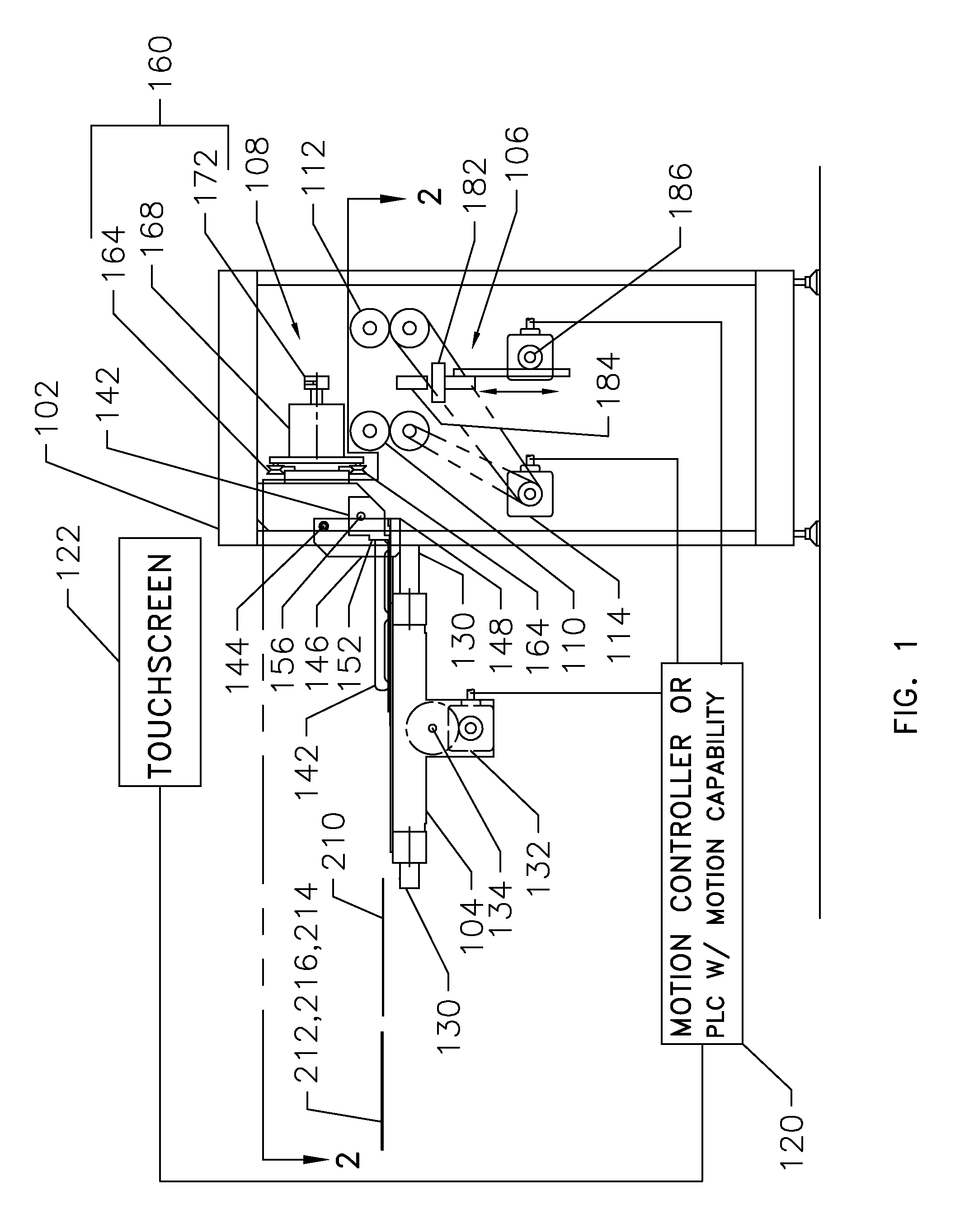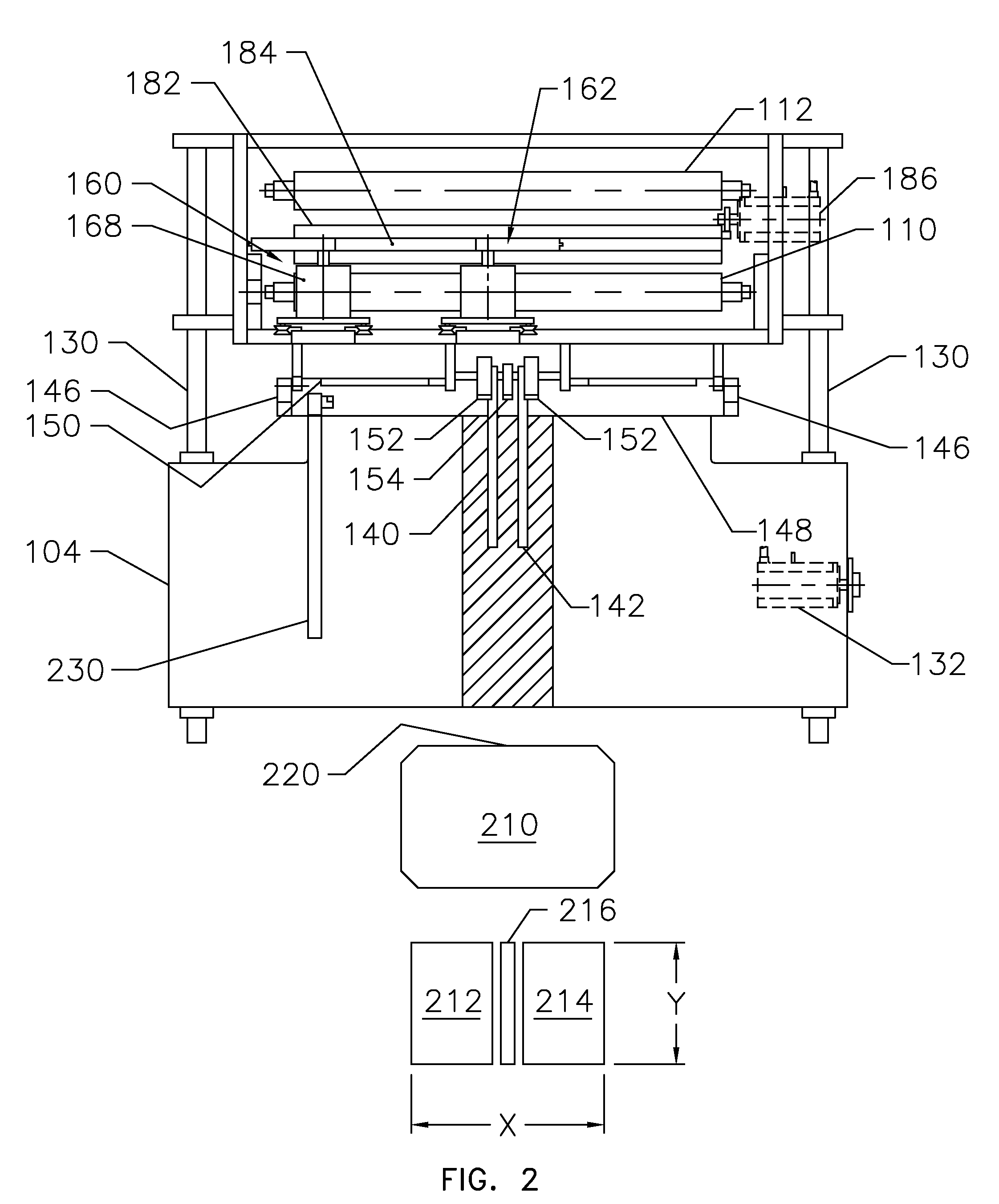Single axis apparatus for manufacturing hard book cover
a single-axis, hard book cover technology, applied in the field of tucking and folding book cases, can solve the problems of difficult to provide tucking corners on short-run machines, extra layer of cover material on the inside of the panel,
- Summary
- Abstract
- Description
- Claims
- Application Information
AI Technical Summary
Benefits of technology
Problems solved by technology
Method used
Image
Examples
Embodiment Construction
[0046]When cover material is attached to a rigid panel to produce a hard cover, the corners of the material may be folded and “tucked” to produce a pleasing, functional cover. Tucking is known to those skilled in the art and typically occurs after a first edge of cover material is folded and before an adjoining edge is folded. Tucking involves flattening the angled portion of the folded cover material that extends beyond the panel of the folded edge so that the subsequent fold results in a tighter, neater corner. In production, boards that provide stiffness to the back cover, front cover, and spine are typically first laid in position on a piece of cover material (typically printed on one side and glued on the other). Opposing edges of the cover material may then be folded over and secured to the board. Then, before folding over the remaining two opposing edges, the cover material may be tucked to provide a cleaner, more professional looking corner when the final edges are folded ov...
PUM
 Login to View More
Login to View More Abstract
Description
Claims
Application Information
 Login to View More
Login to View More - R&D
- Intellectual Property
- Life Sciences
- Materials
- Tech Scout
- Unparalleled Data Quality
- Higher Quality Content
- 60% Fewer Hallucinations
Browse by: Latest US Patents, China's latest patents, Technical Efficacy Thesaurus, Application Domain, Technology Topic, Popular Technical Reports.
© 2025 PatSnap. All rights reserved.Legal|Privacy policy|Modern Slavery Act Transparency Statement|Sitemap|About US| Contact US: help@patsnap.com



